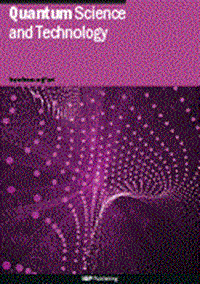量子联想记忆的理论框架
IF 5
2区 物理与天体物理
Q1 PHYSICS, MULTIDISCIPLINARY
引用次数: 0
摘要
联想记忆(AM)是指将记忆与输入联系起来的能力,其目标是恢复损坏的模式。它已经在经典物理系统中得到了深入的研究,例如在神经网络中,吸引子动力学取决于稳定解。最近报道了量子领域的几个扩展,显示出不同的特征。在这项工作中,我们开发了一个基于开放量子系统动力学的量子AM (QAM)的综合框架,这使我们能够比较现有模型,确定执行AM任务的理论先决条件,并以不同的形式扩展它。与经典系统相比,实现存储模式数量指数增长的映射得到了推导。我们建立了对称性和耗散在QAM运行中的关键作用。我们的理论分析证明了处理量子和经典模式、正交和非正交记忆、稳态和亚稳态操作体制以及基于测量的输出的可行性。最后,这为量子计算和机器学习的实际应用开辟了新的途径,例如量子纠错或量子存储器。本文章由计算机程序翻译,如有差异,请以英文原文为准。
Theoretical framework for quantum associative memories
Associative memory (AM) refers to the ability to relate a memory with an input and targets the restoration of corrupted patterns. It has been intensively studied in classical physical systems, as in neural networks where an attractor dynamics settles on stable solutions. Several extensions to the quantum domain have been recently reported, displaying different features. In this work, we develop a comprehensive framework for a quantum AM (QAM) based on open quantum system dynamics, which allows us to compare existing models, identify the theoretical prerequisites for performing AM tasks, and extend it in different forms. The map that achieves an exponential increase in the number of stored patterns with respect to classical systems is derived. We establish the crucial role of symmetries and dissipation in the operation of QAM. Our theoretical analysis demonstrates the feasibility of addressing both quantum and classical patterns, orthogonal and non-orthogonal memories, stationary and metastable operating regimes, and measurement-based outputs. Finally, this opens up new avenues for practical applications in quantum computing and machine learning, such as quantum error correction or quantum memories.
求助全文
通过发布文献求助,成功后即可免费获取论文全文。
去求助
来源期刊

Quantum Science and Technology
Materials Science-Materials Science (miscellaneous)
CiteScore
11.20
自引率
3.00%
发文量
133
期刊介绍:
Driven by advances in technology and experimental capability, the last decade has seen the emergence of quantum technology: a new praxis for controlling the quantum world. It is now possible to engineer complex, multi-component systems that merge the once distinct fields of quantum optics and condensed matter physics.
Quantum Science and Technology is a new multidisciplinary, electronic-only journal, devoted to publishing research of the highest quality and impact covering theoretical and experimental advances in the fundamental science and application of all quantum-enabled technologies.
 求助内容:
求助内容: 应助结果提醒方式:
应助结果提醒方式:


